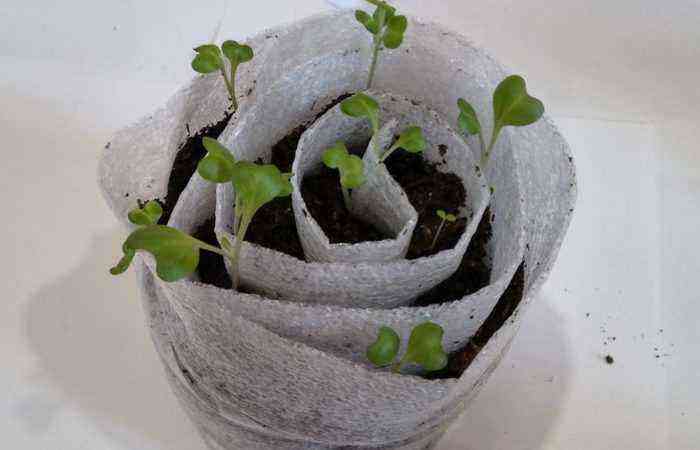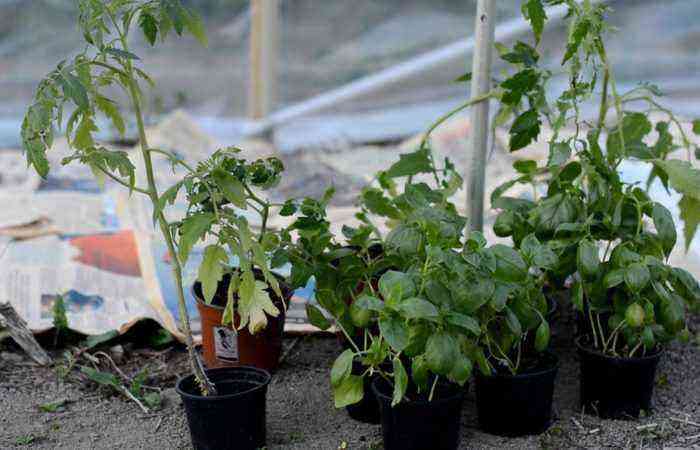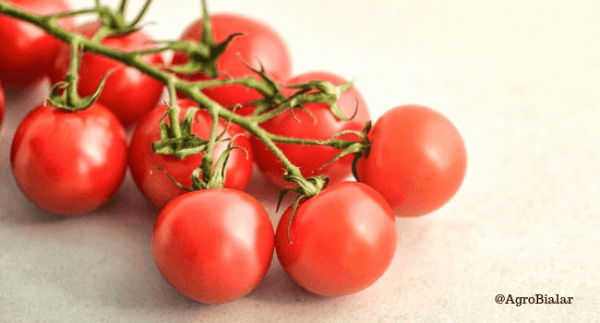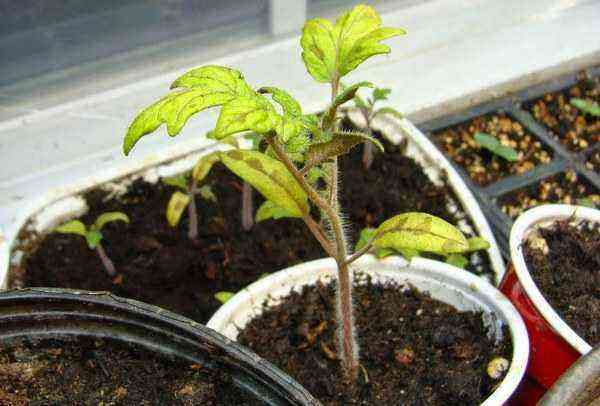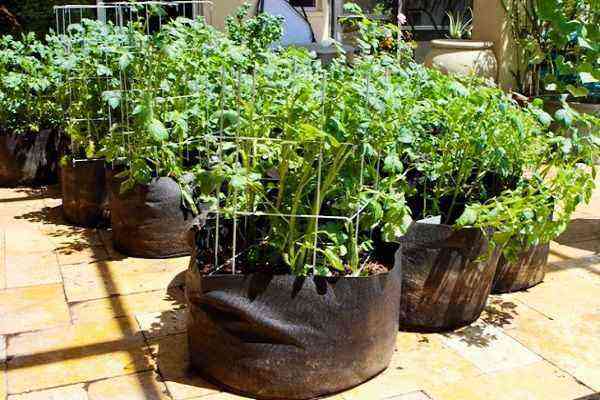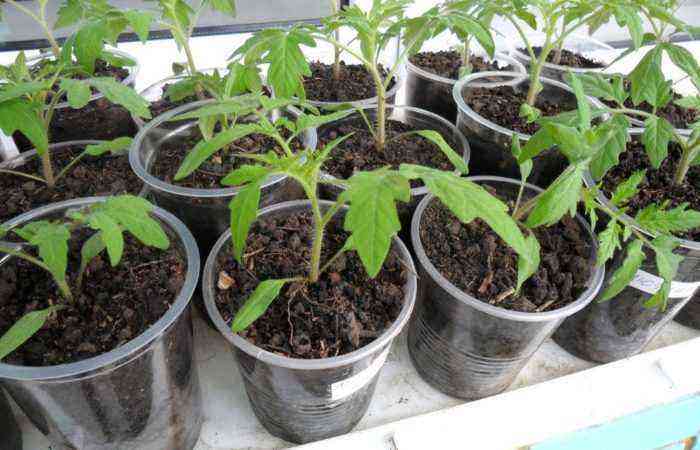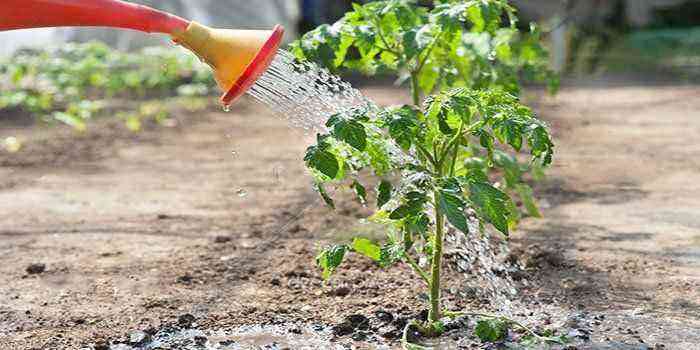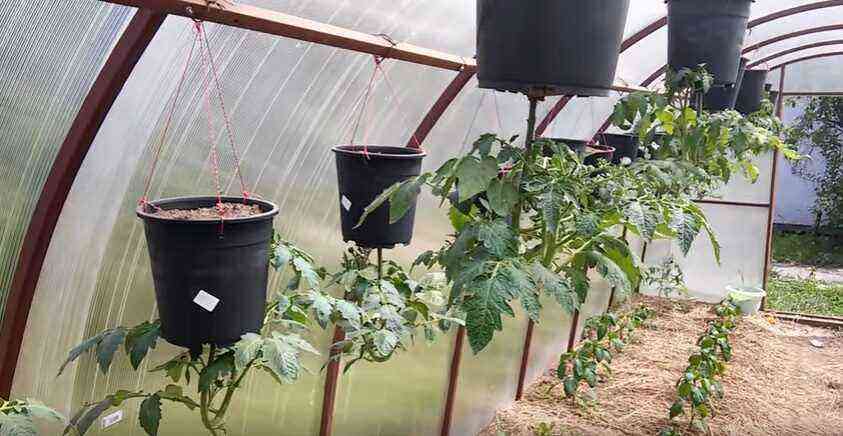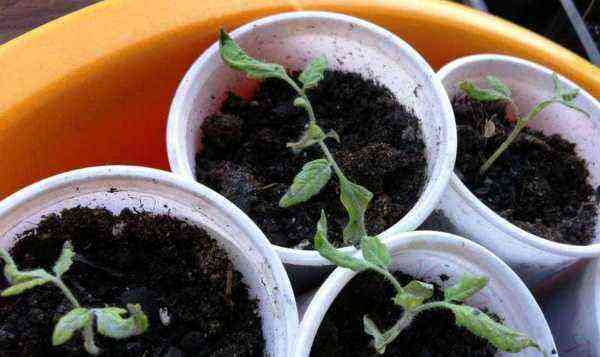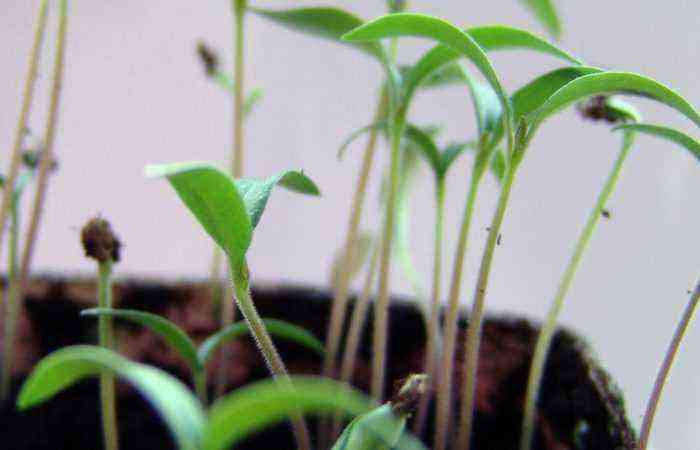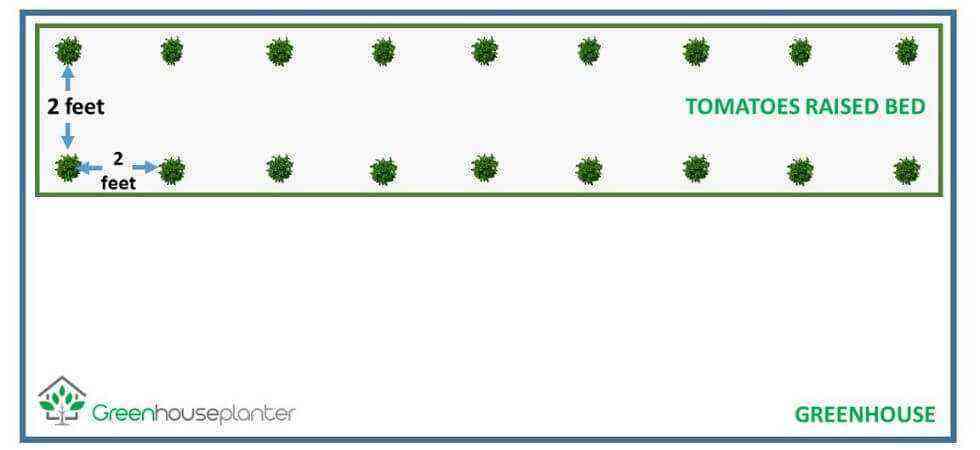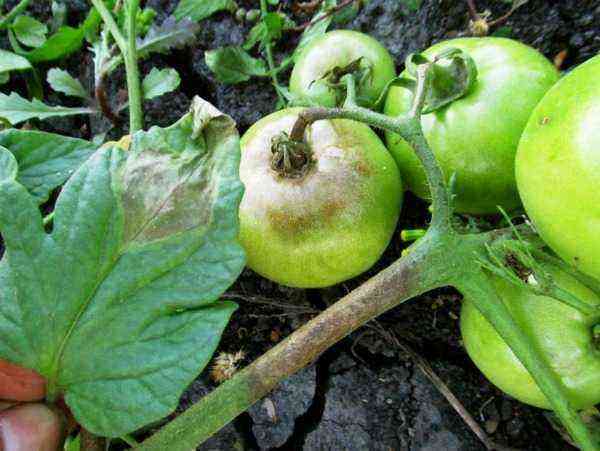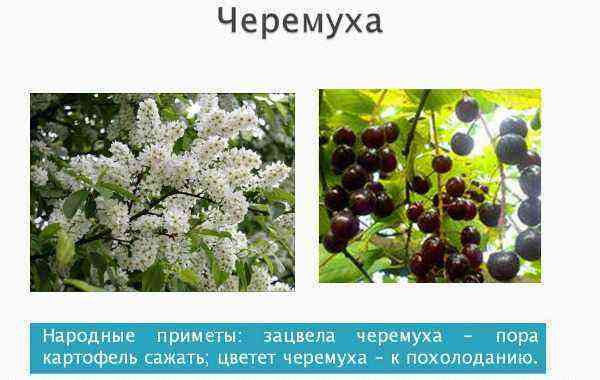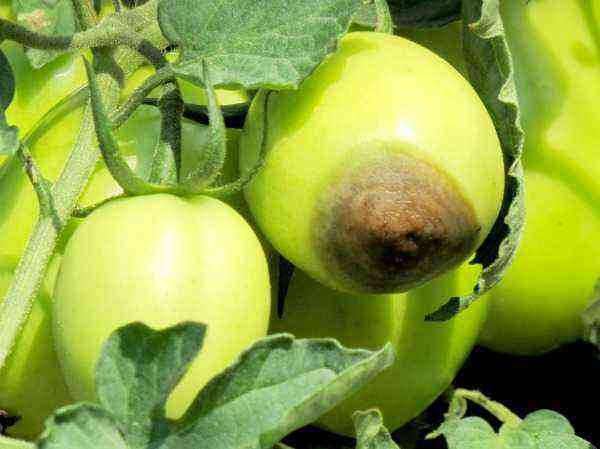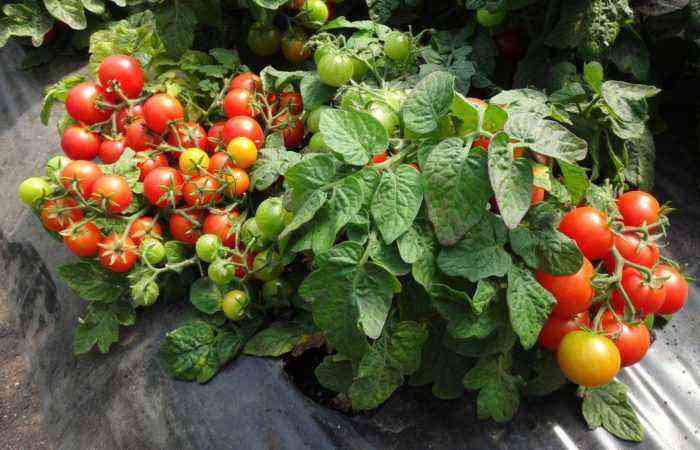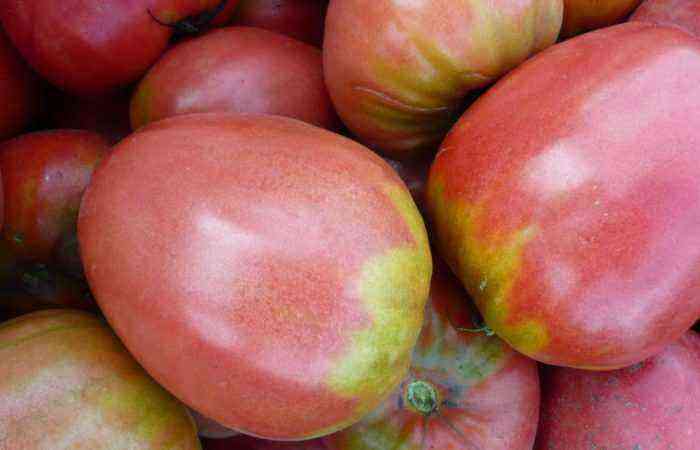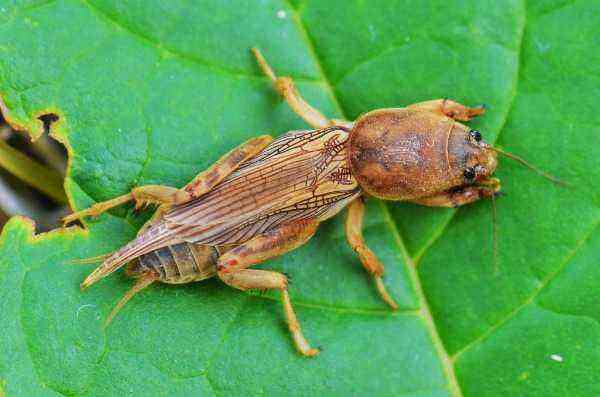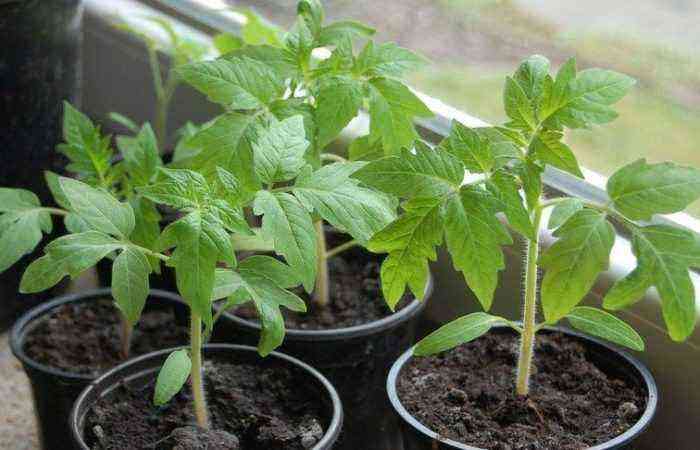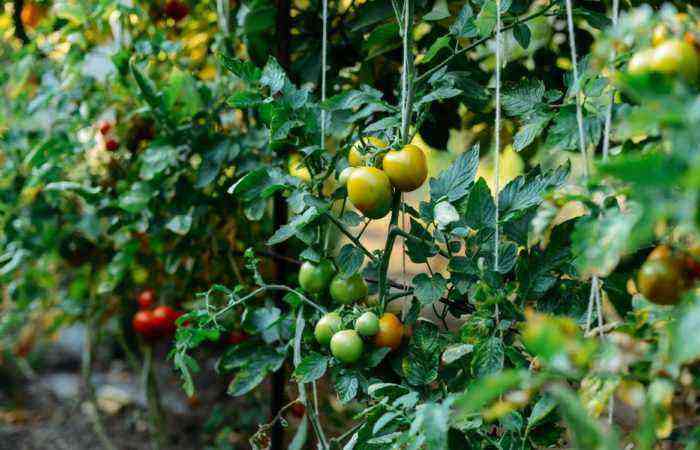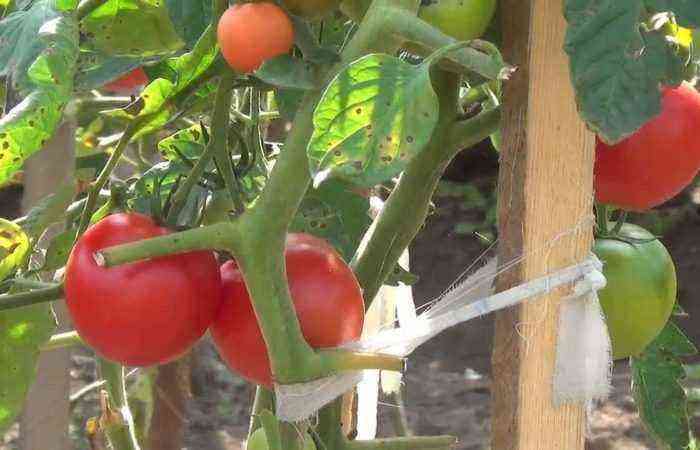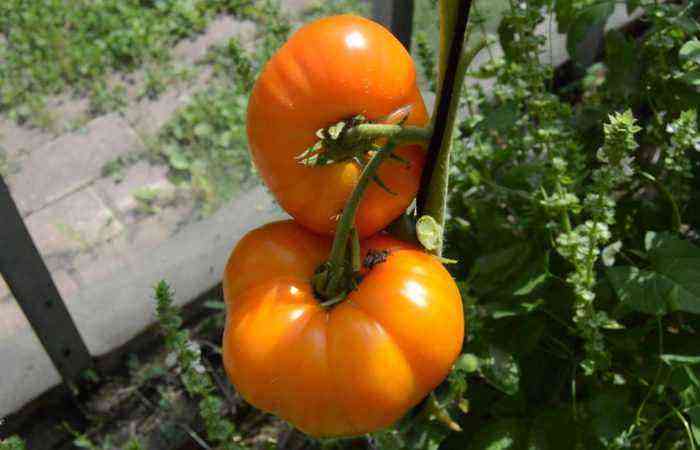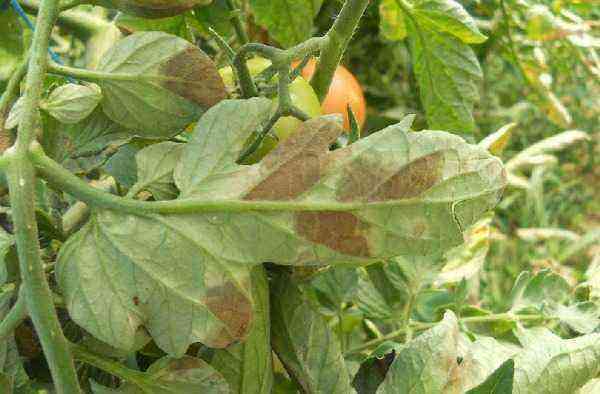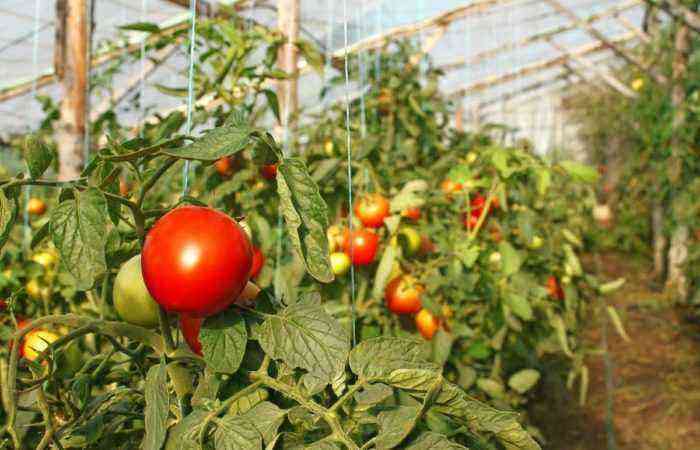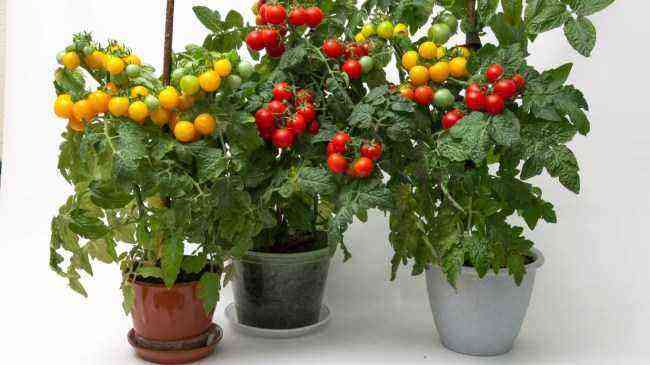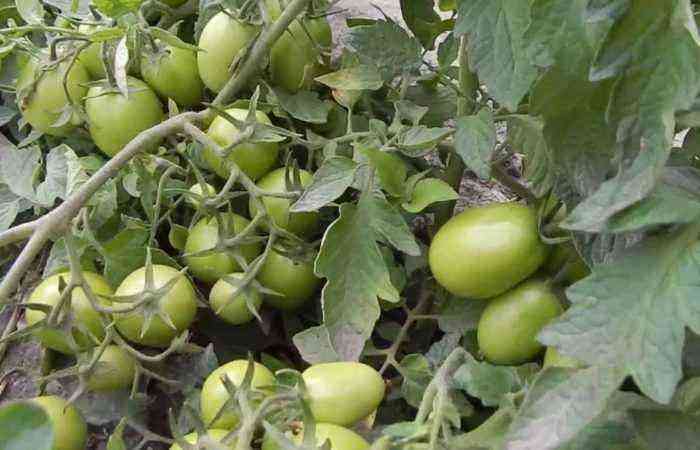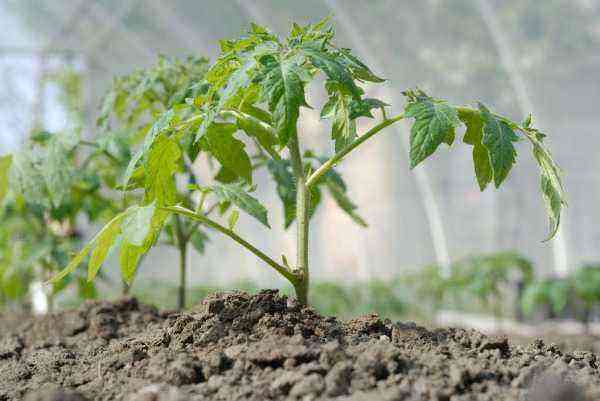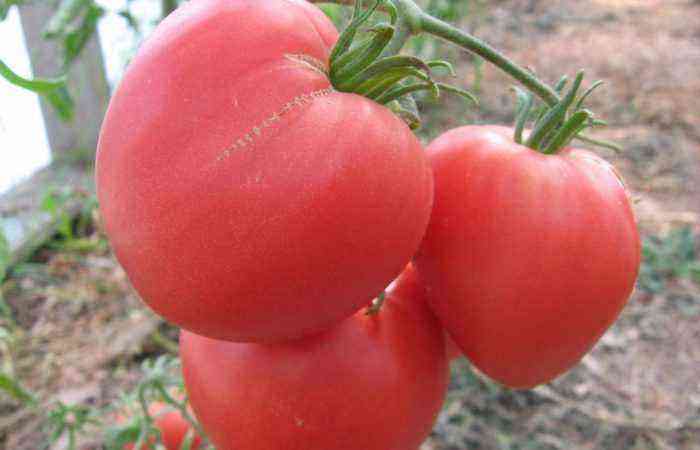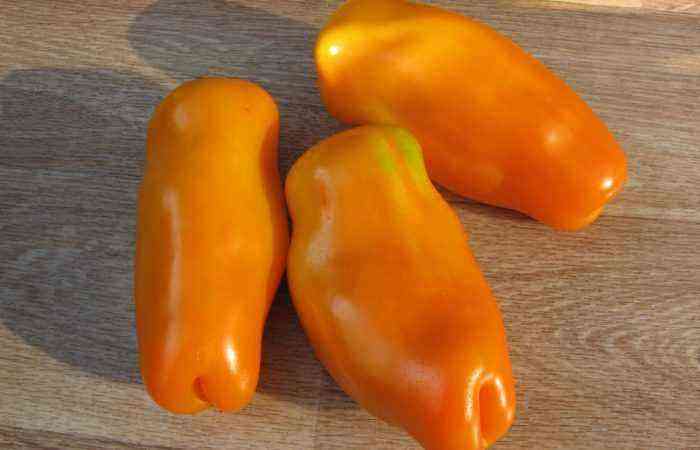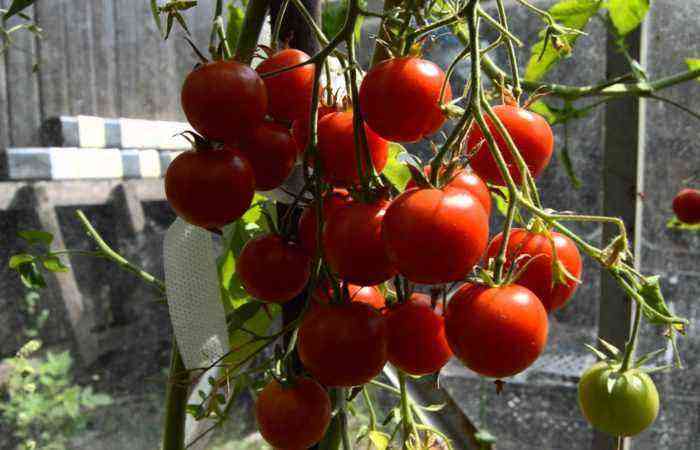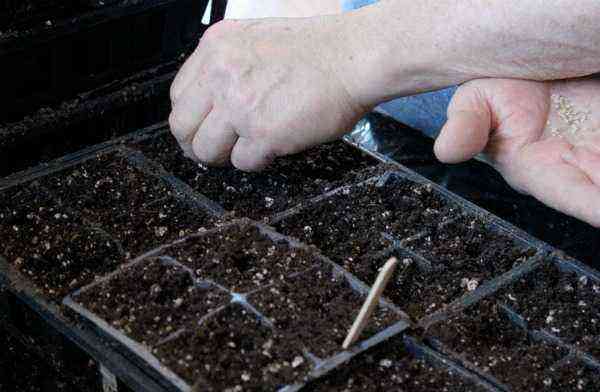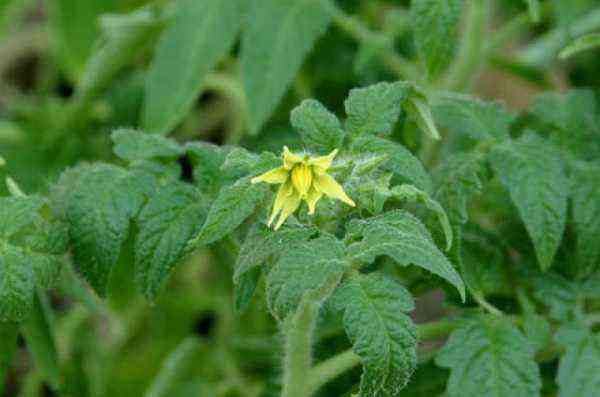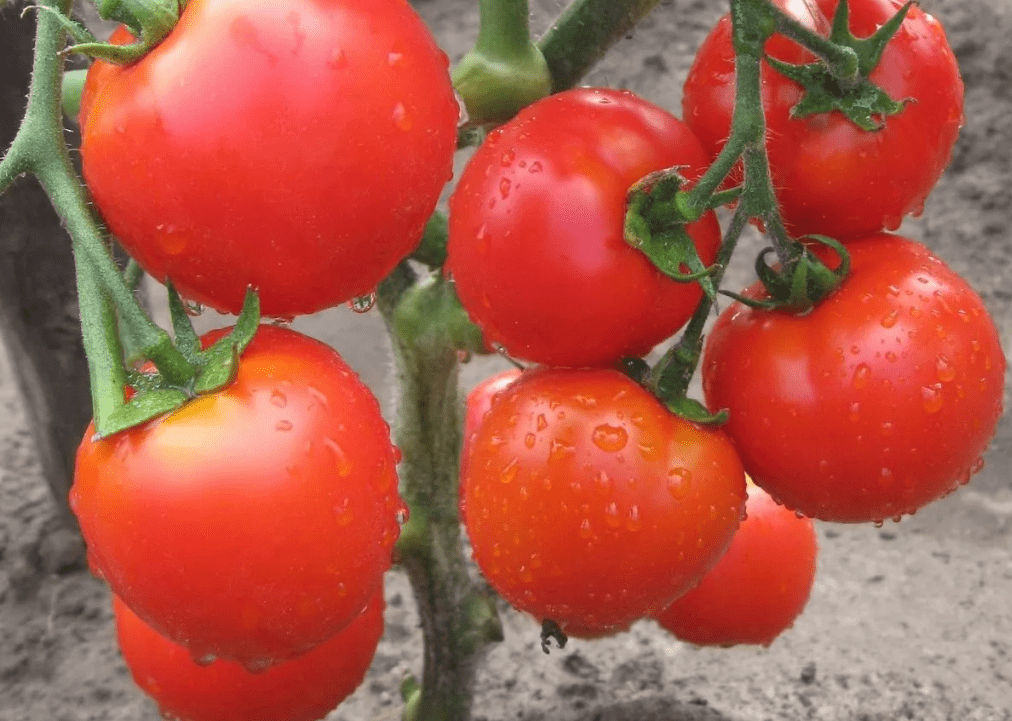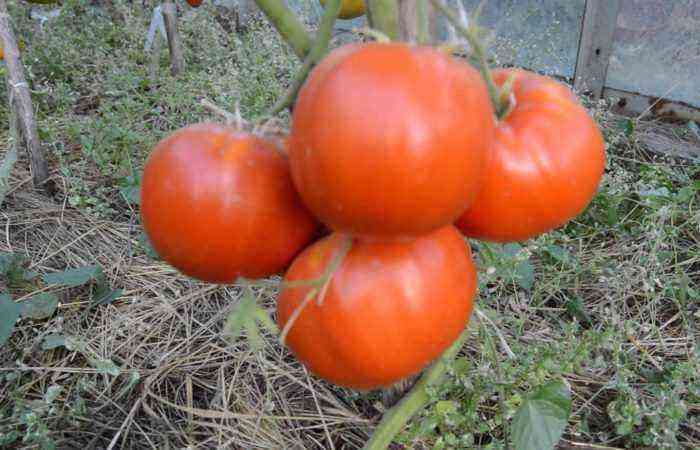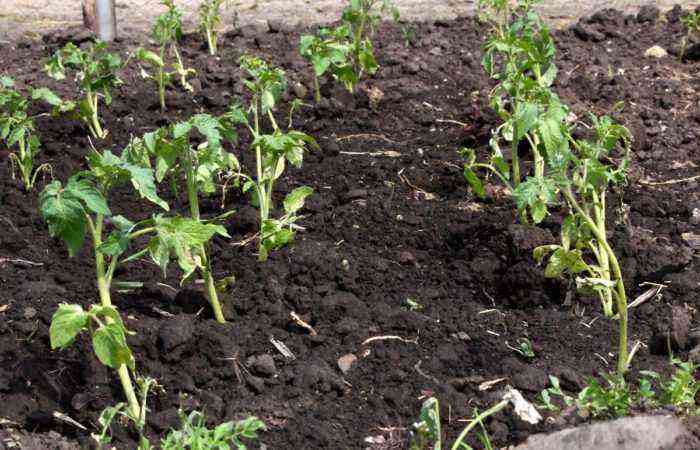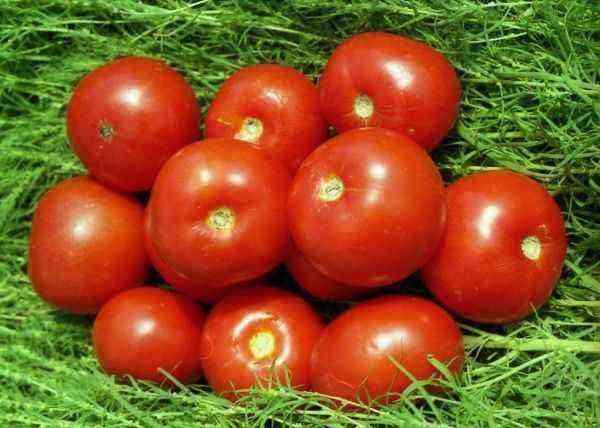The whitefly is one of the most dangerous pests of tomatoes. After getting into favorable conditions, insects quickly increase in number, weaken plants, and become the cause of viral and fungal diseases. In greenhouses inhabited by pests, there are no good crops.
To prevent this from happening, it is important to take timely measures to destroy whiteflies. Otherwise, insects will settle on the site for a long time, year after year destroying all the results of labor.
Biology of the whitefly
There are more than 1500 whitefly species in the world, 20 of which are distributed in Europe. Tomatoes are mainly affected by the greenhouse (greenhouse) whitefly.
This insect is native to South America, where it was first recorded as a pest of tomatoes in 1870. Today, the “enemy” is listed on all continents. In our climatic conditions, it mainly lives in greenhouses and indoors on ornamental and vegetable plants. Occasionally, open ground tomatoes can also be affected.
The whitefly is a very small insect, up to 30 mm in length, with a light yellow body with white wings and grayish legs. The life span of a female is XNUMX days.
During her life, she lays 85-130 eggs on the underside of the leaf, placing them in 10-20 pieces in the form of a ring. The eggs are initially light yellow in color, turning black in 10 days.
After 12 days, larvae with legs and antennae emerge from them. They move around the leaf in search of a favorable place. After sticking to the leaf, the legs lose and take the form of flat light green scales 0,6-0,9 mm in size. So in a stationary state, the larva feeds on the juices of the plant.
Soon the larva passes into the nymph stage. Its surface is covered with a wax coating, which reliably protects against insecticides. By the end of development, the larva is covered with puparia, and after 13-15 days winged individuals fly out of the pupa.
In the conditions of year-round greenhouses, the whitefly gives 10-16 generations. Survives the winter in the form of an adult or puparia-covered pupa in the surface layers of the soil or plant debris.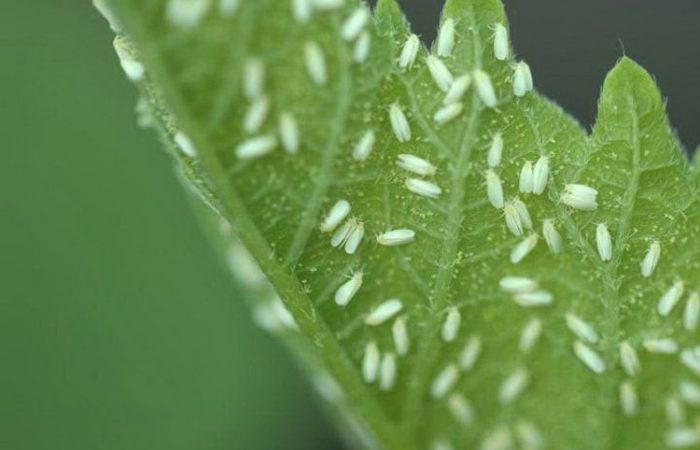
Harmfulness
Larvae and adults feed on the cell sap of tomatoes, depriving plants of nutrients. The leaves turn yellow, and fall off if severely damaged.
A particular threat is posed by larvae that suck out the juices of the culture more than they need. At the same time, they secrete sugary substances, on which soot fungi (cladosporium) subsequently settle. This leads to a decrease in photosynthesis and disrupts plant respiration. With a strong defeat, the death of a tomato is possible.
In addition, whiteflies carry viruses. Many of them are incurable, become the cause of epiphytosis, the death of a significant part of the tomatoes.
Causes of appearance and conditions for development
Initially, whiteflies enter the greenhouse with infected plants. Rarely is there another option. Together with air currents, insects are able to overcome impressive distances.
Migration often occurs due to a change in the previous habitat conditions: when treating neighboring areas with chemicals or settling insects – natural enemies of the whitefly.
In the future, the growth rate of the pest colony is facilitated by: a combination of high humidity and air temperature, excessive planting density, lack of ventilation of the greenhouse and nearby compost heaps.
The ideal air temperature for whitefly breeding is + 21 ° C … + 27 ° C, air humidity – 60-75%. Wintering adults and pupae die at -12°C.
Signs of a pest
Very often, the appearance of a pest in a garden with tomatoes goes unnoticed. Insects are small, nest on the lower part of the leaf, eggs and larvae are difficult to see at all.
External signs of colonization of tomatoes by whiteflies appear only with an increase in the colony.
Obvious signs:
- growth inhibition of tomatoes;
- the appearance of subtle white and yellowish spots on the leaves;
- numerous punctures on the surface of the sheet;
- sticky coating and light tubercles on the underside of the leaves.
If you touch or simply shake the stem of a tomato, you can see a large number of flying white insects. They look like moths, but several times smaller.
Mechanical methods of dealing with whiteflies
It is quite possible to get rid of the whitefly by mechanical methods, while the colony of pests is not numerous. Before starting work, it is useful to reduce the air temperature in the greenhouse to +10°C. A cool atmosphere inhibits pests. Whiteflies become immobile and are easier to remove.
Rinsing with water
First, the tomatoes are washed with water from a watering hose. The soil with downed adults is loosened by 1-1,5 cm and sprinkled with peat. After the leaves of tomatoes are washed with soapy water.
Manual removal
Collecting whiteflies by hand is quite difficult; at the slightest touch, insects scatter in different directions. The best time for this is the coolness of the early morning, in such conditions the pests are less mobile.
Many gardeners use a vacuum cleaner for manual harvesting. It sucks up flying insects well.
Traps
The whitefly sees colors and is strongly attracted to yellow. This feature of the pest is used in traps. You can buy a ready-made glue trap at a garden store. For example, the company “Bona Forte”. Adhesive tapes of firms: “Fumitoks” or “Moskitol”.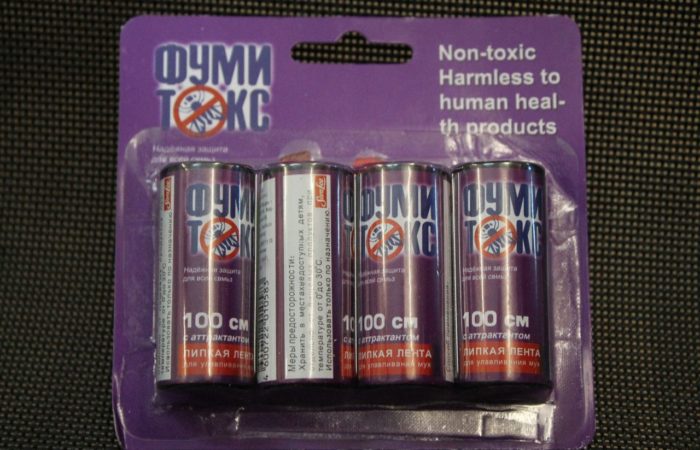
You can make a trap yourself. The basis is cardboard, plywood or plexiglass. They are cut out (size 30 X 40) and painted in bright yellow. Then mix the components of the adhesive base in equal proportions:
- Castor oil,
- honey,
- petrolatum,
- pine rosin.
The mixture is kept in a water bath until an even consistency is obtained. Glue is applied with a brush on cardboard. Traps are hung in places with the greatest accumulation of pests.
The method is quite effective. At the slightest shaking of the bushes, whiteflies take off, rush to the yellow square and stick. One trap is enough for an area of 10 m², you just need to regularly wash off adhering insects with warm water.
Fumigation
Smoke bombs are used after harvesting and destruction of plant residues. Before fumigation, the greenhouse is sealed as much as possible, all surfaces are moistened. Set fire to sulfur bombs in an amount calculated on the area of the room, and leave for 3 days. Then the greenhouse is ventilated.
How to get rid of folk remedies
For best results, mechanical methods are combined with the processing of tomatoes with folk remedies. These funds are indispensable during and 20 days before the fruiting of tomatoes, when chemicals cannot be used.
- Soap solution. Laundry soap (20 g) is dissolved in warm water (1 l) and foam is whipped. Wipe the underside of the leaf plate affected by the larvae with a soft sponge.
- Tobacco. Remove tobacco from 20 cigarettes and pour 1 liter of hot water. Insist 5 days and filter.
- Yarrow. Fresh grass (300 g) is crushed, poured with water (3 l) and infused for 3 days.
- Dandelion. Crushed rhizomes (100 g) and leaves (100 g) are poured with 3 liters of water and infused for 3 days.
- Garlic. Chopped garlic (150 g) is poured into 10 liters of water, insisted for 1 day and filtered.
Before use, 20 g of laundry soap is added to each infusion.
Folk remedies have a short protective effect. Spraying of tomatoes is carried out every 5-7 days up to 6-7 times. With such a multiplicity, even numerous colonies can be destroyed.
Biological methods suitable for greenhouse
The best and absolutely harmless alternative to chemicals is biological agents. This is the settlement in the greenhouse of insects and fungi – entomophages of the whitefly.
Encrasia
Encrasia females lay eggs in the bodies of whitefly larvae, the hatching offspring feed on their contents. Whitefly larvae die and mummify.
Settlement of the entomophage in the greenhouse is carried out immediately after the pest is detected. Cards with mummified encrasia are placed evenly over the entire area. For prevention, 5-10 individuals per 1 m², with a mass defeat of 15-30 individuals per 1 m². If necessary, the procedure is repeated after 7-12 days.
Macrolophus
This is a predatory bug that feeds on whitefly larvae. During the period of life, one female bug destroys up to 2500 pest larvae. Upon detection of mass colonization, 4-5 individuals per 1 m² are released, for prevention – 1 bug.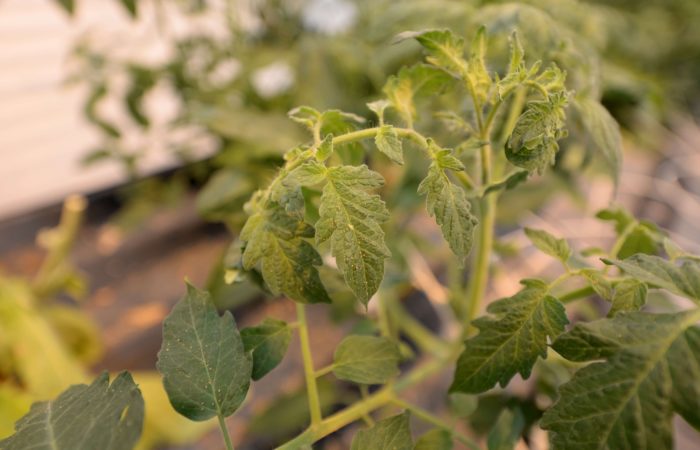
Gold-eyed
Only lacewing larvae lead a predatory lifestyle. They are very voracious, one larva destroys up to 600 whiteflies. Since female lacewings are very prolific, colonizing the greenhouse with this predator gives good results.
Goldeneye is used at the stage of second instar larvae. During mass colonization by a pest, 100-150 larvae per 1 m² are released into the greenhouse.
ladybug
Predatory ladybugs and their larvae feed on adults, larvae and whitefly eggs. During the day, the insect destroys up to 100-120 pests.
To attract ladybugs to the greenhouse, dill and other umbrella plants are sown nearby, dandelion and yarrow are left to grow. The first generation of ladybugs can be caught in the meadow, and later provide them with conditions for shelter for the winter. Insects hibernate under the dry bark of trees and fallen leaves.
Verticillin
This is a biological preparation based on the entomopathogenic fungus Verticillium lecani. It grows into the body cavity of larvae and adults, releases toxins and causes their death.
Dissolve 1 ml of culture liquid in 25 liter of water. Tomatoes are sprayed 3 times with an interval of 7 days, carefully processing the underside of the leaves.
Chemical methods
If the whitefly colony is numerous and threatens the well-being of the entire site, the use of insecticides is indispensable. But there is one problem. Literally after one treatment, the surviving whiteflies can acquire resistance to the active substance of the drug.
Thiamethoxam
Preparations based on this active substance are applied to the soil. It is quickly absorbed and distributed throughout the plant. After 1 day, the pests die. The protective action lasts 2-4 weeks. Hazard class – 2-3.
Preparations:
- “Aktara” VDG (watering under the root with an aqueous solution (1 g / 10 l), consumption of 1 liter per 1 m² or 25 pots);
- “Doctor” briquettes (2-4 briquettes are applied for each plant after abundant watering).
These are the leading preparations against the whitefly, and it is they that should be used primarily in protected ground conditions.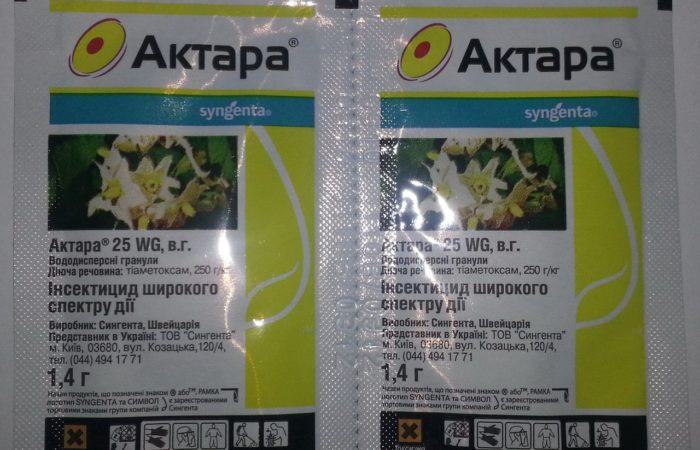
Acetamiprid
Penetrates into plants through roots and vegetative organs. After 1 hour causes the death of pests. The period of protective action is 21 days. The drug “Mospilan”. Spraying with an aqueous solution (5-8 g / 10 l).
Imidacloprid
It has a general toxic effect on pests, causes their death in 1 day. The period of protective action is 14-21 days. Hazard class 3. Almost all preparations are applied by spraying.
Preparations:
- “Biotlin” VRK (solution 5 ml / 10 l, consumption 10 l per 100 m²);
- “Commander” VRK (solution 5 ml / 10 l, consumption 10 l per 100 m²);
- “Commander Maxi” VDG (solution 1,5 g / 10 l, consumption 3 l per 1 m²);
- “Iskra Zolotaya” VRK (used only during the period of mass colonization of the whitefly, solution 5 ml / 10 l, consumption 10-30 l per 100 m²);
- “Spark” TAB (introduced into the soil for seedlings, the amount depends on the volume of the container, consumption according to the instructions);
- “Tanrek” VRK (solution 5 ml / 10 l, consumption 10 l / 100 m²);
- “Confidor Extra” VDG (solution 1,5 g / 10 l, consumption 1 liter per 10 m²).
Manufacturers note that the use of these drugs does not cause pest resistance. But in practice this is not always confirmed.
Pirimiphos-methyl
Apply by spraying, pests die within a day.
Preparations:
- “Aktellik” EC (solution 20 ml / 10 l, consumption 2 l / 10 m²);
- “Phosbecid” EC (solution 10 ml / 10 l, consumption 2 l / 10 m²).
The period of protective action is 10-15 days, hazard class -2.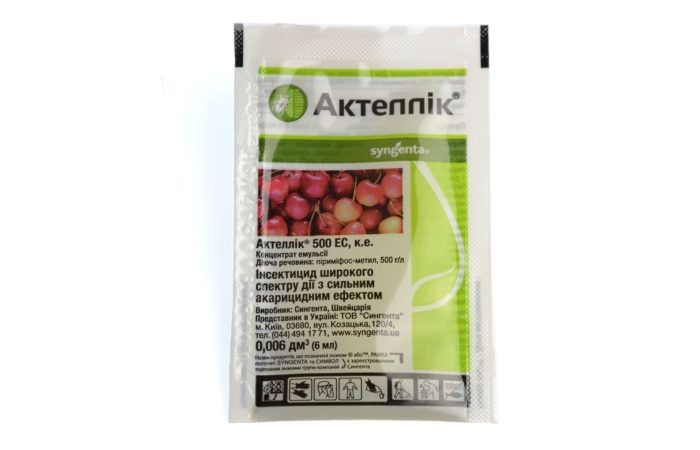
Cypermethrin
It quickly paralyzes all organs of pests, whiteflies die in a day. Hazard class 3.
Preparations:
- “Inta-Vir” TAB (solution 8 g / 10 l, consumption 2-3 l per 10 m²);
- “Iskra” TAB (solution 10 g / 10 l, consumption 2 l per 10 m²).
The period of protective action is 10-15 days.
Malathion
The protection period is 7-10 days. The substance is applied by spraying.
Preparations:
- “Fufanon” EC (solution 10 ml / 10 l, consumption 1,5 l / 10 m²);
- “Karbofos” SP (60 g / 7 l, consumption 1 l / 10 m²);
- “Kemifos” EC (solution 10 ml / 10 l, consumption 1,5 l / 10 m²).
Whiteflies quickly develop resistance, including to pirimiphos-methyl.
Pyrethrum
Insecticide in the form of an aerosol. Hazard class 3. Spray onto the surface of the plant from a distance of 30 cm. The treatment is carried out in the morning or in the evening with diffused lighting in a room where there are no drafts and wind currents.
After the first treatment with any drug, it may seem that the pests have completely disappeared. It is not always so. Very often, some insects fly away, hide and lay eggs. After a while, a new numerous colony appears, already resistant to the drug used.
Therefore, treatment with drugs should be carried out in 2-3 visits. Each time it is better to use drugs with a new active substance.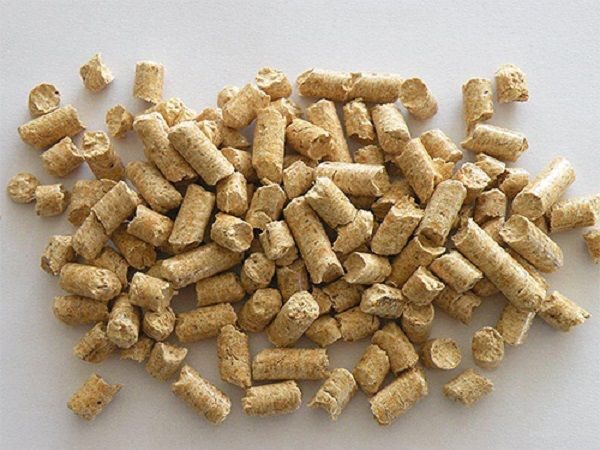
Tomato Processing Tips
If the whitefly appeared on tomato seedlings at home, the plants must be isolated from indoor flowers. The use of toxic chemicals in the apartment is undesirable. An exception is preparations for irrigation under the root or in the form of briquettes, which are added to each container.
But more often, gardeners use all mechanical methods and processing with folk remedies. It is impossible to bring seedlings with pests and larvae into the greenhouse.
When planning the processing of tomatoes in the open field, weather conditions and ambient temperature are taken into account. The optimum air temperature for working with insecticides is +12°C…+22°C. The day is cloudy, but without precipitation and strong winds. If the weather is sunny, then spraying is planned for the evening or morning hours.
It is impossible to spray with chemicals during the abundant flowering of tomatoes. This leads to mass death of bees. For the same reason, before processing, you need to remove all flowering weeds that grow near the garden.
The greenhouse is well ventilated until condensation is eliminated from the structures and leaves of plants. The air temperature is reduced to the optimum.
The work is carried out with a high-quality sprayer, which gives a fine drizzle. The leaves and stems of tomatoes should be moistened on all sides, sprayed and the soil near the bush.
Work in closed clothes, gloves and a respirator. The maximum contact time with insecticides is 1 hour.
The immunity of tomatoes weakened after being damaged by a pest needs to be strengthened. To do this, remove severely affected lower leaves. Tomatoes are sprayed with biostimulants: Epin, Immunocytofit, Novosil, Agat 25.
Calcium ions have a positive effect on the synthesis of proteins that help the plant survive stress. Therefore, foliar and root fertilizing with calcium will be useful.
You can find some gardener tips on how to deal with whitefly by watching the video.
Prevention
The risk of whitefly infestation of tomatoes can be reduced. For this, a number of simple measures are used:
- the soil is dug deep;
- destroy all plant debris, weeds in the garden and near it;
- the greenhouse and soil are disinfected with solutions of copper sulfate or 40% formalin;
- they freeze the soil in the greenhouse in winter: they remove removable structures, open doors and vents in cold weather;
- acquiring the leaves of seedlings, they are examined;
- the compost pit is located away from the greenhouse;
- control the temperature and humidity of the air (according to the requirements of tomatoes);
- tomatoes are planted according to the scheme recommended for the variety;
- place traps in places where pests can penetrate (near windows, doors);
- fine meshes are installed on the windows and doors of the greenhouse;
- any plant that is brought into the greenhouse is examined.
Preventive spraying will help prevent the appearance of pests. To do this, you can use any herbal infusion recommended for treatment.
Most problems can be easily avoided if you take the time to inspect your tomatoes every day. Often gardeners notice disease or pests on tomatoes when the attack shows clear signs on dying plants. As a result, the cost of labor and money increases significantly.
